Exploring Density and Water Flow Outside
Head outside to explore the concepts of density and water flow. Compare the densities of natural objects you find outside.
Every time I see a sink or float activity, the ridiculous Will It Float? bit (complete with awful theme song) comes to mind. Regardless of what Letterman turned it into, observing whether or not an object will sink or float is a great way to explore the property of density.
Science refresher: Density is the mass per unit of volume. You can also say it’s the amount of stuff in a given amount of space. {Yes, stuff is a technical term and yes, it’s okay to use it when explaining things.} The higher the density, the more molecules in the given space.
Your children have probably explored density and whether or not objects will sink or float in the bath tub or swimming pool.
Have you ever talked to them about what they are observing? Why do certain objects float while others sink? Have you observed the differences in materials? Does it make a difference about the size of the object?
We took our density exploration outside.
I filled a bucket of water and asked Aiden to drop things in to see if they would float.
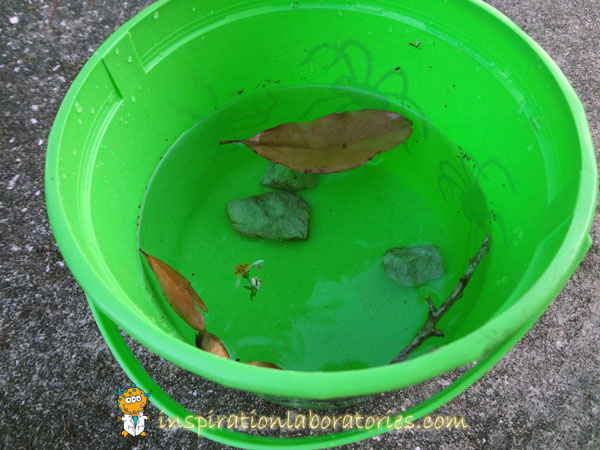
He chose acorns, leaves, rocks, sticks, and flowers.
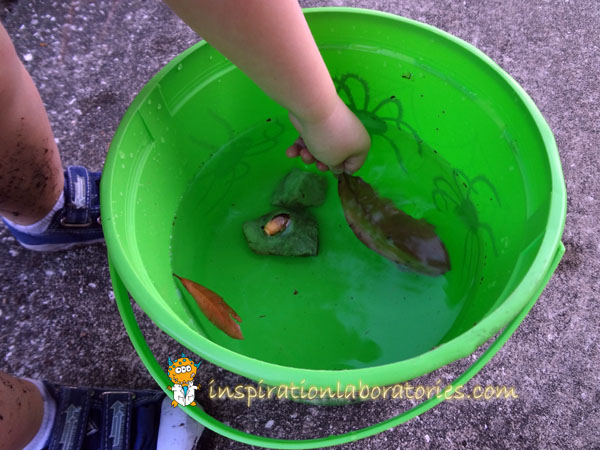
He pushed objects under the water and watched them float back to the top.

He dropped objects from up high and watched them make a splash and then sink.
Did you notice a commonality in our objects? Almost all of them floated. The only things that were more dense than the water were the rocks!
Aiden added a handful of dirt/sand {I never know what to call it here in Florida} to the bucket. We noticed that some of the dirt sank and some of it floated.
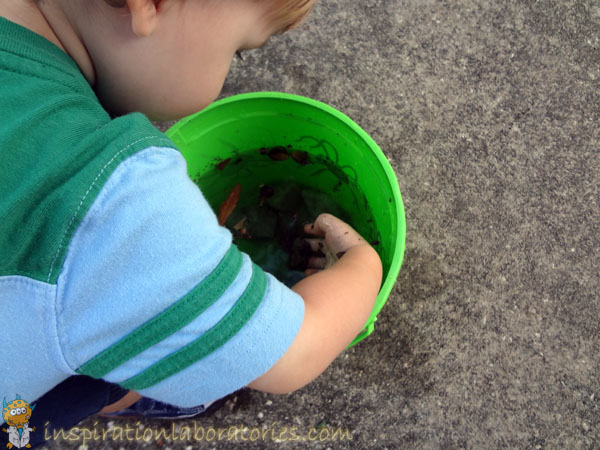
So why am I teaching my 2 year old about density?
- Making observations is a useful science skill. While playing, he is making observations, exploring how things work, and learning.
- Making predictions is also a useful science skill. We asked him if he thought a particular object would sink or float, but he never answered. He was too busy observing.
- Playing in water is fun. Moving the object around is a sensory experience.
- This play helps build a foundation for future learning. He is building up his prior knowledge from which he can call upon the next time he experiences similar density situations.
After exploring density, we dumped out the water and observed how it flowed through the yard.
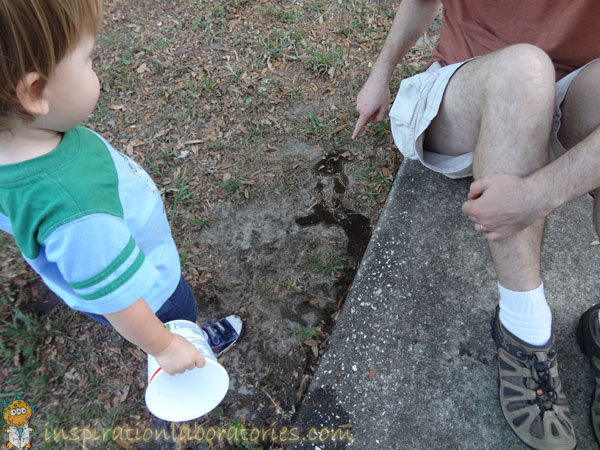
Patrick pointed out the path of the water.
This was a mini lesson in how streams and rivers flow. The water moves along the surface pushing dirt and debris as long as it has enough energy to do so. If the path is blocked {meaning the water doesn’t have enough energy to move the object in the way}, the water will go around. Again, we’re building the foundations for future science learning here. The more you experience and observe things, the easier is to put concepts together and explain things.
Other Ways to Explore Density
- Create density layers using only salt, water, and food coloring.
- Learn more about teaching density to toddlers and preschoolers in the A to Z Science series.
What science learning fun have you been doing lately?
Linking up here.

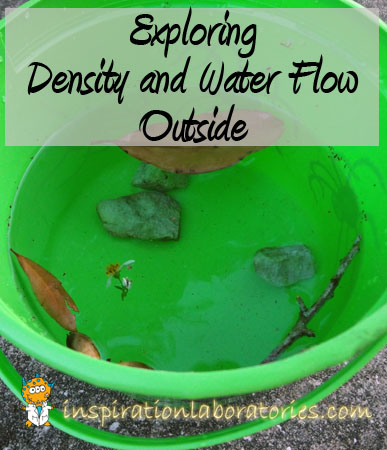
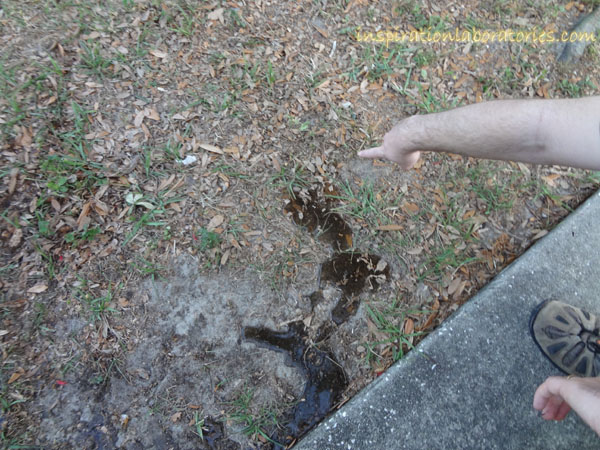
Leave a Reply